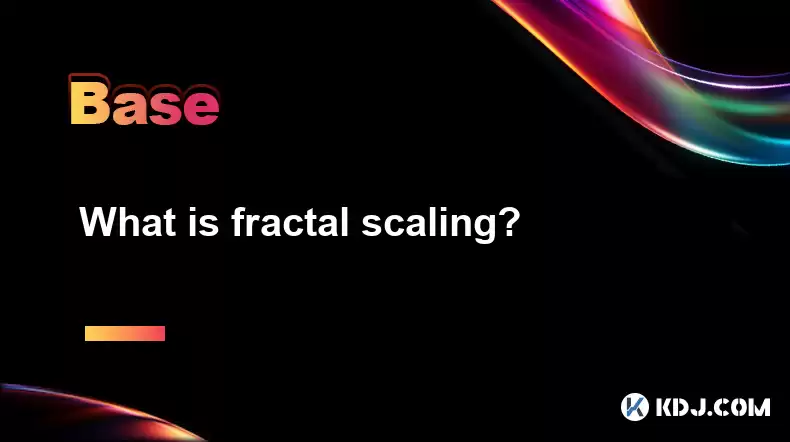-
 Bitcoin
Bitcoin $114500
-0.31% -
 Ethereum
Ethereum $3648
1.11% -
 XRP
XRP $3.033
-0.27% -
 Tether USDt
Tether USDt $0.9999
-0.01% -
 BNB
BNB $758.5
-0.32% -
 Solana
Solana $167.5
1.48% -
 USDC
USDC $0.9998
-0.02% -
 TRON
TRON $0.3331
0.74% -
 Dogecoin
Dogecoin $0.2039
0.25% -
 Cardano
Cardano $0.7419
-0.46% -
 Hyperliquid
Hyperliquid $39.21
2.66% -
 Stellar
Stellar $0.4049
-1.95% -
 Sui
Sui $3.483
-0.56% -
 Bitcoin Cash
Bitcoin Cash $570.8
2.89% -
 Chainlink
Chainlink $16.67
-0.57% -
 Hedera
Hedera $0.2470
-1.57% -
 Ethena USDe
Ethena USDe $1.001
0.00% -
 Avalanche
Avalanche $22.36
1.52% -
 Litecoin
Litecoin $123.4
4.35% -
 UNUS SED LEO
UNUS SED LEO $8.989
0.09% -
 Toncoin
Toncoin $3.324
-2.40% -
 Shiba Inu
Shiba Inu $0.00001219
-1.30% -
 Uniswap
Uniswap $9.811
2.54% -
 Polkadot
Polkadot $3.662
-0.07% -
 Monero
Monero $295.5
-3.85% -
 Dai
Dai $1.000
0.01% -
 Bitget Token
Bitget Token $4.345
0.24% -
 Cronos
Cronos $0.1380
0.95% -
 Pepe
Pepe $0.00001044
-1.14% -
 Ethena
Ethena $0.5981
-4.24%
What is fractal scaling?
Fractal scaling in crypto helps analyze market trends and optimize blockchain networks by identifying self-similar patterns across different scales.
Apr 08, 2025 at 09:28 am

What is Fractal Scaling?
Fractal scaling is a concept that has found significant application within the cryptocurrency and blockchain space, particularly in the analysis of market trends and the design of decentralized systems. At its core, fractal scaling refers to the self-similar patterns that repeat at different scales within a system. In the context of cryptocurrencies, this concept is used to understand and predict market behaviors, as well as to optimize the performance and scalability of blockchain networks.
Understanding Fractals in Cryptocurrency Markets
In the cryptocurrency markets, fractals are patterns that repeat across different time frames and price levels. Traders and analysts use these patterns to identify potential trends and make informed decisions. For instance, a fractal pattern observed on a daily chart might also be visible on a weekly or monthly chart, suggesting a consistent behavior in the market. This self-similarity allows traders to apply the same analytical techniques across various time scales, enhancing their ability to predict future price movements.
Fractal Scaling in Blockchain Technology
Beyond market analysis, fractal scaling plays a crucial role in the design and optimization of blockchain networks. Blockchain technology, by its nature, is decentralized and distributed, and fractal scaling can help in managing the complexity and scalability of these networks. For example, sharding—a technique used to split a blockchain into smaller, more manageable pieces—can be seen as an application of fractal scaling. Each shard operates independently but follows the same rules as the main chain, creating a self-similar structure that enhances the network's overall performance.
Applying Fractal Scaling in Market Analysis
To apply fractal scaling in market analysis, traders typically follow a set of steps to identify and interpret fractal patterns. Here’s how they might go about it:
- Identify the Fractal Pattern: Look for a sequence of five consecutive bars on a price chart where the middle bar is the highest or lowest. This pattern indicates a potential reversal point in the market.
- Confirm the Pattern: Once a potential fractal is identified, traders often wait for additional confirmation, such as a break above or below the fractal's high or low point, to validate the pattern.
- Apply Across Time Frames: After confirming the fractal, traders can apply the same pattern across different time frames to see if the self-similarity holds. This can help in understanding the strength and reliability of the pattern.
- Make Trading Decisions: Based on the fractal patterns observed across various time frames, traders can make informed decisions about entry and exit points in the market.
Fractal Scaling and Decentralized Systems
In the realm of decentralized systems, fractal scaling is used to enhance the efficiency and scalability of networks. For instance, in a decentralized finance (DeFi) platform, fractal scaling can be applied to manage the distribution of computational resources across different nodes. By ensuring that each node operates in a self-similar manner, the overall system can handle increased loads more effectively, leading to better performance and user experience.
Practical Examples of Fractal Scaling in Cryptocurrencies
Several cryptocurrencies and blockchain projects have implemented fractal scaling in their operations. For example, Ethereum 2.0 uses sharding to improve its scalability, which is a direct application of fractal scaling principles. Each shard in Ethereum 2.0 operates as a smaller version of the main network, processing transactions and smart contracts independently but in a coordinated manner.
Another example is Cardano, which employs a layered architecture that can be seen as a fractal structure. The Cardano network is divided into different layers, each responsible for specific functions such as settlement and computation. This layered approach allows for scalability and flexibility, as each layer can be optimized independently while maintaining the overall integrity of the network.
Challenges and Considerations in Fractal Scaling
While fractal scaling offers numerous benefits, it also comes with its own set of challenges. One of the primary concerns is the complexity involved in managing self-similar structures across different scales. Ensuring that each part of the system operates in a coordinated manner requires sophisticated algorithms and robust infrastructure.
Additionally, in the context of market analysis, the reliability of fractal patterns can vary. While some traders swear by the predictive power of fractals, others argue that these patterns can be misleading, especially in highly volatile markets. Therefore, it’s crucial for traders to combine fractal analysis with other technical indicators and fundamental analysis to make well-rounded decisions.
Frequently Asked Questions
Q: Can fractal scaling be applied to all cryptocurrencies?
A: While fractal scaling can be applied to any cryptocurrency market for analysis, its effectiveness may vary depending on the specific characteristics of the cryptocurrency and the market conditions. Highly volatile cryptocurrencies might exhibit less reliable fractal patterns compared to more stable ones.
Q: How does fractal scaling differ from other scaling solutions in blockchain?
A: Fractal scaling focuses on the self-similarity and repetition of patterns or structures at different scales, whereas other scaling solutions like layer-2 solutions or sidechains might not necessarily rely on this principle. Fractal scaling aims to maintain the integrity and efficiency of the system across all levels, while other solutions might prioritize speed or cost reduction.
Q: Are there any tools specifically designed for fractal scaling analysis in cryptocurrency markets?
A: Yes, there are several trading platforms and analytical tools that offer features for identifying and analyzing fractal patterns in cryptocurrency markets. Tools like TradingView and MetaTrader 4/5 include indicators and drawing tools that can help traders spot and confirm fractal patterns.
Q: How can beginners start using fractal scaling in their cryptocurrency trading?
A: Beginners can start by learning the basics of fractal patterns and how to identify them on price charts. They can use free resources and tutorials available online to understand the concept. Once comfortable with the theory, they can practice identifying fractals on historical data before applying them to real-time trading scenarios. It’s also advisable to start with a demo account to gain experience without risking real money.
Disclaimer:info@kdj.com
The information provided is not trading advice. kdj.com does not assume any responsibility for any investments made based on the information provided in this article. Cryptocurrencies are highly volatile and it is highly recommended that you invest with caution after thorough research!
If you believe that the content used on this website infringes your copyright, please contact us immediately (info@kdj.com) and we will delete it promptly.
- Metamask, Altcoins, and the Move: Is Cold Wallet the Future?
- 2025-08-06 04:30:12
- BlockDAG, BNB, and SEI: What's Hot and What's Not in the Crypto World
- 2025-08-06 04:50:13
- Cryptos Under $1 Primed for a Bull Run: Which Will Explode?
- 2025-08-06 05:30:12
- Coinbase (COIN) Stock Trading Lower: Navigating the Crypto Equity Reset
- 2025-08-06 04:35:13
- Meme Coins Skyrocket: Is Dogecoin About to Be Dethroned?
- 2025-08-06 03:50:13
- Tether's On-Chain Surge: USDT Dominates and Drives Blockchain Fees
- 2025-08-06 02:50:13
Related knowledge

What is the difference between CeFi and DeFi?
Jul 22,2025 at 12:28am
Understanding CeFi and DeFiIn the world of cryptocurrency, CeFi (Centralized Finance) and DeFi (Decentralized Finance) represent two distinct financia...

How to qualify for potential crypto airdrops?
Jul 23,2025 at 06:49am
Understanding What Crypto Airdrops AreCrypto airdrops refer to the distribution of free tokens or coins to a large number of wallet addresses, often u...

What is a crypto "airdrop farmer"?
Jul 24,2025 at 10:22pm
Understanding the Role of a Crypto 'Airdrop Farmer'A crypto 'airdrop farmer' refers to an individual who actively participates in cryptocurrency airdr...

What is the difference between a sidechain and a Layer 2?
Jul 20,2025 at 11:35pm
Understanding the Concept of SidechainsA sidechain is a separate blockchain that runs parallel to the main blockchain, typically the mainnet of a cryp...

What is the Inter-Blockchain Communication Protocol (IBC)?
Jul 19,2025 at 10:43am
Understanding the Inter-Blockchain Communication Protocol (IBC)The Inter-Blockchain Communication Protocol (IBC) is a cross-chain communication protoc...

How does sharding improve scalability?
Jul 20,2025 at 01:21am
Understanding Sharding in BlockchainSharding is a database partitioning technique that is increasingly being adopted in blockchain technology to enhan...

What is the difference between CeFi and DeFi?
Jul 22,2025 at 12:28am
Understanding CeFi and DeFiIn the world of cryptocurrency, CeFi (Centralized Finance) and DeFi (Decentralized Finance) represent two distinct financia...

How to qualify for potential crypto airdrops?
Jul 23,2025 at 06:49am
Understanding What Crypto Airdrops AreCrypto airdrops refer to the distribution of free tokens or coins to a large number of wallet addresses, often u...

What is a crypto "airdrop farmer"?
Jul 24,2025 at 10:22pm
Understanding the Role of a Crypto 'Airdrop Farmer'A crypto 'airdrop farmer' refers to an individual who actively participates in cryptocurrency airdr...

What is the difference between a sidechain and a Layer 2?
Jul 20,2025 at 11:35pm
Understanding the Concept of SidechainsA sidechain is a separate blockchain that runs parallel to the main blockchain, typically the mainnet of a cryp...

What is the Inter-Blockchain Communication Protocol (IBC)?
Jul 19,2025 at 10:43am
Understanding the Inter-Blockchain Communication Protocol (IBC)The Inter-Blockchain Communication Protocol (IBC) is a cross-chain communication protoc...

How does sharding improve scalability?
Jul 20,2025 at 01:21am
Understanding Sharding in BlockchainSharding is a database partitioning technique that is increasingly being adopted in blockchain technology to enhan...
See all articles

























































































